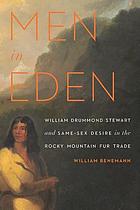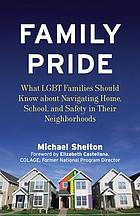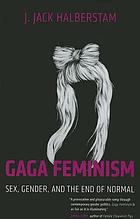Men in Eden: William Drummond Stewart and Same-Sex Desire in the Rocky Mountain Fur Trade by William Benemann (University of Nebraska Press, 2012). Let's begin with the book Hanna referred to as the book about "mountain men humping!" Benemann takes as his subject a 19th century Scottish aristocrat, William Drummond Stuart, and through Stuart's colorful life explores the contours of same-sex desire on the borderlands of "civilized" society. Stewart, a younger son who later in life inherited the family title from his older brother, came of age during the Napoleonic wars and served in the 15th King's Hussars where he rose to the rank of Captain. After retiring from the army, Stewart traveled widely in the Middle East and North America -- and in North America found the homosociality of the American West particularly amenable. Throughout his life, Stewart's most enduring relationships were with men, including one French-Cree trader who he traveled extensively with and even took with him back to Scotland after assuming responsibility for the family's estate; the couple lived for a time in one of the secluded lodges on the land, where Stewart kept all the material evidence of his travels abroad. According to Benemann, previous treatments of Stewart have gone out of their way to ignore the evidence of same-sex relationships in the Scotsman's life. Benemann's work is a thoughtful and nuanced challenge to this previous "closeting" of Stewart's sexual self, taking those same-sex relationships for granted as a meaningful part of Stewart's experience. Anyone with an interest in nineteenth-century Anglo-American sexuality and gender should definitely add this one to their reading list.
Documenting Intimate Matters: Primary Sources for a History of Sexuality in America edited by Thomas A. Foster (University of Chicago Press, 2013). Published as a companion volume to John D'Emilio and Estelle Freedman's seminal Intimate Matters (1988), this new primary source reader offers a thoughtful compilation of lightly annotated documents related to various aspects of sexuality in American culture from the colonial era to the present. A brief 225 pages, featuring selections from about seventy sources, this reader is best seen as a jumping-off point for further discussion and exploration rather than a source for full-text transcriptions. Each of the five chronologically-arranged sections are introduced with a brief preface on the sexual issues of the period in question, and each document likewise features a thoughtful introduction. While necessarily incomplete, given its length, Documenting Intimate Matters is admirably diverse in its socio-cultural and geographic scope as well as the genres of (textual) documents found therein. Some of my favorite include newspaper announcements from the 1780s-90s placed by men whose wives had deserted them to inform creditors the husbands would no longer take responsibility for their (ex?) wives debts; the angry diary entries of Frederick Ryman (1884)*, whose sentiments about women would not be out of place on anti-feminist blogs of today; and Susan Fitzmaurice's 2002 reflections on the struggles of raising a child with Downs Syndrome in away that prepares them for a sexually active, sexually pleasurable, and sexually responsible adulthood. An excellent anthology for use in introductory classes.
*Full disclosure: Ryman's diaries reside at the Massachusetts Historical Society.
Family Pride: What LGBT Families Should Know about Navigating Home, School, and Safety in Their Neighborhood by Michael Shelton (Beacon Press, 2013). The latest addition to Beacon Press's "queer ideas/queer actions" series, Shelton's Family Pride is an accessible and nuanced snapshot of life in America for queer parents with children as we enter the 2010s. Centering the lived experiences of both LGBT parents and their children -- through in-depth interviews Shelton conducted, as well as the growing body of relevant research literature -- Shelton's book should be on the bookshelf of every "family values" advocate (members of the Institute for American Values I'm looking at you!) as well as in the library of every queer activist and/or LGBT organization. While the title makes it sound like Family Pride is a handbook for queer families, in reality the volume is more of a status-quo assessment with some recommendations (from Shelton's perspective as a therapist who has worked with queer families) for what queer families need in order to thrive. He does an excellent job of incorporating (I'd even argue prioritizing) the experiences of families who don't often make "gay family" headlines: queer parents in straight marriages, parents who are in the closet, non-white families, families living with financial insecurity, families with uncertain immigration status, parents in prison or with a history of interaction with the law that makes calling the police for help an unthinkable solution to anti-gay speech or acts. My only quibble with Shelton's framing is that he never explicitly defines an "LGBT family" as a unit made up of parents-plus-children in which at least one parent is queer -- yet that is clearly his operational definition. I would have appreciated either a more explicit acknowledgement that this book focuses on parenting-while-gay OR an effort to include the voices of queer families that do not include children. We are, most assuredly, families too.
Gaga Feminism: Sex, Gender, and the End of Normal by J. Jack Halberstam (Beacon Press, 2012). While in Austin, I snagged a copy of yet another volume in the "queer actions/queer ideas" series -- Halberstam's meditation on the playful, anarchic queer feminism burbling up through the actions and expressions within youth culture. Taking pop culture references from Sponge Bob to Lady Gaga, Halberstam argues for the liberatory playfulness of more fluid sex and gender identities that -- rather than requiring taxonomical fixity -- provide a sandbox full of tools and opportunities for self-expression. I'm an easy sell on this score: while I am at times skeptical about the power of pop culture expression to effect political change, neither am I threatened by sex and gender anarchy. I am comfortable in my own gender (fairly conventional, by 21st century standards -- though I'd likely have been a shockingly difficult daughter in many an earlier time and/or place) and sexuality (fluidly bisexual, married, monogamous). And I see no reason not to afford others the opportunity
Hard to Swallow: Hard Core Pornography on Screen edited by Claire Hines and Darren Kerr (Columbia University/Wallflower Press, 2012). This excellent anthology explores the pornographic genre of "hard core" films from a variety of perspectives: through the lens of history, film studies, sexual politics, and more. The majority of contributions focus on the United States and Britain (the editors are lecturers at Southampton Solent University, UK), and despite the negative connotations of "hard to swallow" virtually all of the authors take for granted that pornographic film as a genre deserves serious consideration. Pornography, it is assumed throughout, is simply explicit representation of human sexual activities; the messages of that representation can be positive or negative, depending upon execution and interpretation. My favorite pieces include: Linda Williams' '"White Slavery,' Or the Ethnography of 'Sexworkers': Women in Stag Films in the Kinsey Archive"; "The Progressive Potential of Behind the Green Door" by Darren Kerr; "Reel Intercourse: Doing Sex on Camera" by Clarissa Smith," and "Interrogating Lesbian Pornography: Gender, Sexual Iconography, and Spectatoring," by Rebecca Beirne. At their best, these essays go beyond commonplace assumptions about pornography as inherently degrading, as without cultural merit, as a male-only pursuit. Williams' piece examines the subjectivity of women in early twentieth century stag films, wondering what light surviving films might shed on performers' agency. Kerr, in "The Progressive Potential..." revisits a film that has been understood as misogynist and asks us to think, again, about the centrality of female sexual pleasure in the narrative. Clarissa Smith pushes back against the notion that performers in porn "just have sex on camera," suggesting that engaging an audience in erotic fantasy is, in fact, a difficult role for which real skills are required (can we all say "duh?"). And finally, Beirne's contribution explores the nuances of voyeurism, performance, and sexual subjectivity in the work of lesbian pornographers.
The entire anthology was absolutely worth reading, though I had quibbles with various assumptions along the way: one author, for example, claimed in passing that "the consumption of pornography ... is an essentially private past time, indulged in as an accompaniment or prelude to masturbation." Yes ... but also, no. Reading/viewing erotica can happen in many contexts, only some of which are solitary, and doesn't necessarily lead to masturbation for all consumers, every time. Likewise, the uncomplicated statement that pornography "began as a male-only pursuit," even if the author acknowledges that "that male-ness has been diluted in recent years," is to ignore the long history of female pornographers and women who have enjoyed erotic material. Women + sexual agency is not, contrary to popular opinion, a twenty-first century phenomenon.
I continue to be fascinated, too, by the assumption (apparently played out in the majority of pornographic film) that straight men don't like to see male bodies centered in porn: from the descriptions of works and from the analysis of the authors it certainly sounds like in mainstream "hard core" (explicit) pornography, it's women's bodies on display for a presumed male audience. Granted I'm queer, so. But in general, what I find visually arousing is the depiction of people having sex. People having sex in ways I can then fantasize about enjoying like they're enjoying it. Watching a woman orgasm on screen is hot (to me) because ohgodohgod I know what that feels like, and if I were in her situation I'd be coming too. So I'm curious what's happening for men who watch porn in which the role of the male actor is basically a two-step process. Step one: Get it up. Step two: Ejaculate on screen. Like, isn't that kinda disappointingly ... thin on material that encourages imaginative projection of yourself into the scene? It's just this thing I keep thinking about, as I'm reading these pieces that assume because women's bodies are the bodies depicted, therefore the audience is supposed to imagine having sex with them (therefore be someone who likes having sex with women) rather than imagine being them (a person, male or female, experiencing sexual pleasure). How would we analyze pornography differently if we assumed the viewer's involvement with those on-screen was a process of empathetic identification rather than (positive or negative) objectification?
Lots to think about ... and I'm footnote mining Hard to Swallow for oft-cited authors and works so I've already got several other books on pornography on order at the library and look forward to reviewing them here!




No comments:
Post a Comment